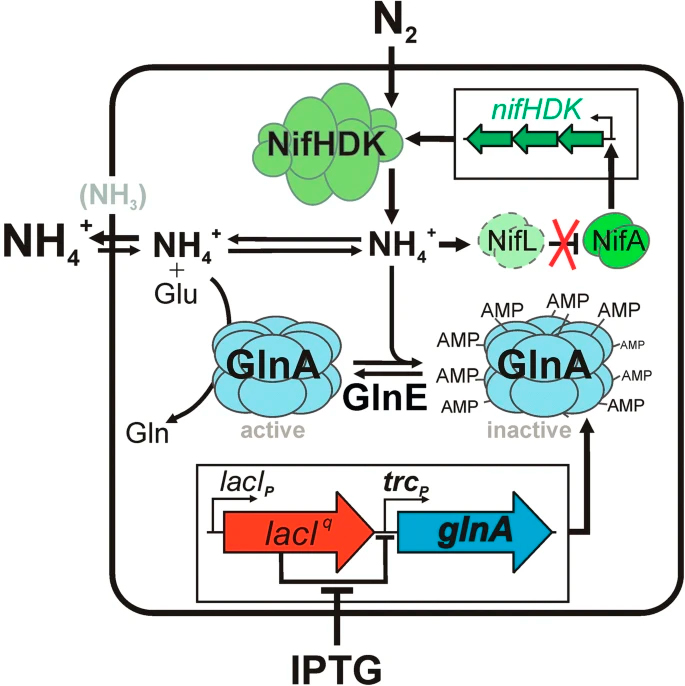Environmental biotechnology, Published: 09 March 2021, 2021
Key points
• Ammonium-excreting bacteria are potential eutrophication agents
• GS-dependent deferred control of bacterial growth and ammonium release
• Strong but transient ammonium cross-feeding of microalgae
Abstract
There is an increasing interest in the use of N2-fixing bacteria for the sustainable biofertilization of crops. Genetically-optimized bacteria for ammonium release have an improved biofertilization capacity. Some of these strains also cross-feed ammonium into microalgae raising additional concerns on their sustainable use in agriculture due to the potential risk of producing a higher and longer-lasting eutrophication problem than synthetic N-fertilizers. Here we studied the dynamic algal cross-feeding properties of a genetically-modified Azotobacter vinelandii strain which can be tuned to over-accumulate different levels of glutamine synthetase (GS, EC 6.3.1.20) under the control of an exogenous inducer. After switching cells overaccumulating GS into a noninducing medium, they proliferated for several generations at the expense of the previously accumulated GS. Further dilution of GS by cell division slowed-down growth, promoted ammonium-excretion and cross-fed algae. The final bacterial population, and timing and magnitude of algal N-biofertlization was finely tuned in a deferred manner. This tuning was in accordance with the intensity of the previous induction of GS accumulation in the cells. This bacterial population behavior could be maintained up to about 15 bacterial cell generations, until faster-growing and nonammonium excreting cells arose at an apparent high frequency. Further improvements of this genetic engineering strategy might help to align efficiency of N-biofertilizers and safe use in an open environment.
Schematic of the genetic engineering strategy used in this study.
